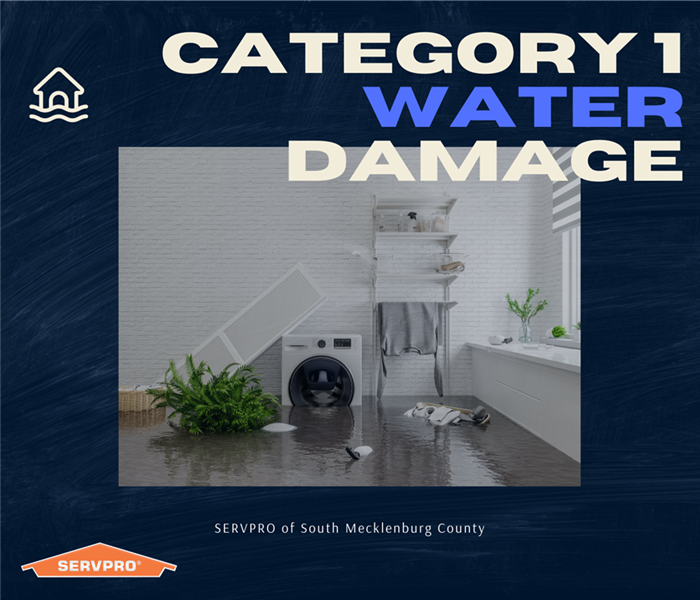Category 1 Water Damage
8/2/2021 (Permalink)
If you end up with a flooded home or business in Charlotte, NC, it can be overwhelming to know what to do next. When you call SERVPRO of South Mecklenburg, we will come out to your property to assess the damage from flooding and then we will categorize it as either type 1, 2, or 3.
The water that is flooding your home in category 1 floods may seem safe to be in contact with, however it can quickly turn to category 2 water, and become unsafe and contaminated. Homes and businesses can suffer from category 1 water flooding in the form of leaks, supply line breaks, pipe breaks, and appliance leaks. These examples are all category one water damage that can potentially turn dangerous. It is therefore important to know the differences in floodwater categories to keep yourself and your family safe.
Category 1 water is clean water that is drinkable from the source. Category 2 water is greywater, which contains some contaminants and causes illness if ingested; and Category 3, also known as black water, is highly contaminated.
It is not ideal to have any type of flooding, but category 1 is safer than the other categories of water because it has no contaminants. This type of water does not pose an immediate threat to humans or pets. While this type of water is not contaminated, it is still essential that you contact professional help immediately to avoid further damage to your property and household items.
Common Types of Category One Water:
Supply Line Leak
Supply line leaks are typically from a clean water source. These leaks can often occur underneath sinks, but also from walls and ceilings depending on where they exist in the building. Be careful, because if freshwater touches or soaks other building materials, it is no longer classified as clean water because the building materials could cause contaminants to enter the water. Professional help may be necessary in these situations.
Pipe Break
Broken pipes can also cause water loss from a clean source like supply line leaks. However, when water touches other household materials, it goes from clean to greywater. Even a tiny crack can release many gallons of water per day and cost you more in your water bill and damages to your home, and often goes unnoticed. Check in common places such as under your sink to ensure there is not a pipe break in your home.
Appliance Leak
Beyond supply leaks and pipe breaks an appliance leak is a common source of clean water flooding. For example, supply hoses fail and valves break, and this can cause pooling near the appliance. Unfortunately, some appliances you likely won’t notice a leak until you remove it. Check appliances such as the fridge periodically. If your utility bill increases, and you are unable to identify the reason, try checking behind appliances.
Other sources of category one water include rain and snowmelt, broken sink and toilet bowls, overflowing bathtubs, and basement flooding from rainstorms.
Clean water, or category one, leaks can often be resolved by the business owner, however, it does not take much water, or much time, to turn into grey or black water. Contact SERVPRO of South Mecklenburg County if you are not sure how to handle the problem.
Want to know more about us? Please check out our other pages:
LinkedIn Facebook Instagram Twitter Angie's List BBB YouTube Pinterest






 24/7 Emergency Service
24/7 Emergency Service
